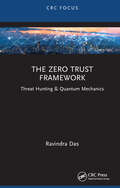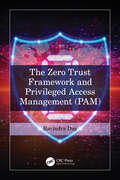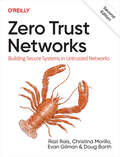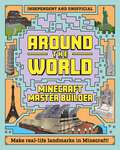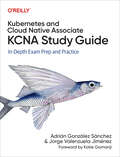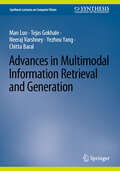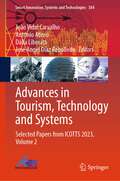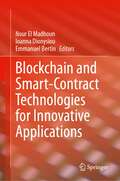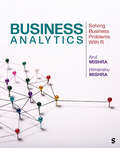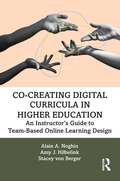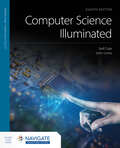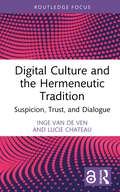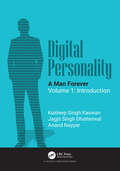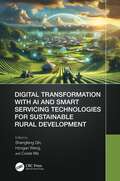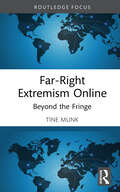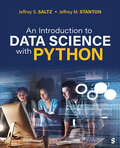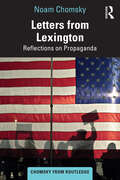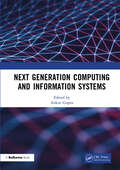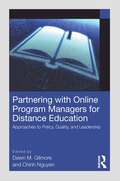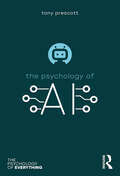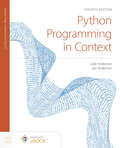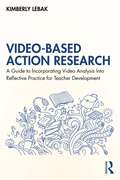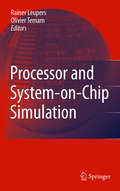- Table View
- List View
The Zero Trust Framework: Threat Hunting & Quantum Mechanics
by Ravindra DasThe Cybersecurity landscape is a daunting one today. It is nothing like it was 10 years ago. Now, it has become very complex, covert, dynamic, and stealthy. It has literally become a cat and mouse game, in which the Cyberattacker is still one step ahead. This is despite all of the technology that is available to us a society, which includes Artificial Intelligence (AI) and Machine Learning. Part of the other problem is that human beings are resistant to change. For example, the password is still the favored way of authenticating and authorizing an individual, but it too has shown its grave limitations. Despite the use of Password Managers, which can create long and complex passwords, people still resort to their old fashioned ways of doing things. So what is needed now is an extreme change, in which, unfortunately, people have no choice in whether or not they will participate. It is called the Zero Trust Framework, and in this methodology, absolutely nobody can be trusted in either the internal or the external environments. The mantra here is to keep verifying everybody, all the time. The Zero Trust Framework also involves the concept of segmentation, in which the IT and Network Infrastructure of a business is broken down into smaller components, much like a Subnet. Each component will have its own layer of security, and every individual must be authenticated via the use of Multifactor Authentication (MFA). In this book, we review both the concepts and mechanics behind the Zero Trust Framework. We also introduce advanced technologies into it, including the use of Biometrics, the Public Key Infrastructure, and Quantum Mechanics/Quantum Cryptography.
The Zero Trust Framework and Privileged Access Management (PAM)
by Ravindra DasThis book is about the Zero Trust Framework. Essentially, this is a methodology where the IT/Network Infrastructure of a business is segmented into smaller islands, each having its own lines of defense. This is primarily achieved through the use of Multifactor Authentication (MFA), where at least three more authentication layers are used, preferably being different from one another.Another key aspect of the Zero Trust Framework is known as Privileged Access Management (PAM). This is an area of Cybersecurity where the protection of superuser accounts, rights, and privileges must be protected at all costs from Cyberattackers. In this regard, this is where the Zero Trust Framework and PAM intertwine, especially in a Cloud-based platform, such as Microsoft Azure.However, as it has been reviewed in one of our previous books, the use of passwords is now becoming a nemesis, not only for individuals but for businesses as well. It is hoped that by combining the Zero Trust Framework with PAM, password use can be eradicated altogether, thus giving rise to a passwordless society.
Zero Trust Networks
by Razi Rais Christina Morillo Evan Gilman Doug BarthThis practical book provides a detailed explanation of the zero trust security model. Zero trust is a security paradigm shift that eliminates the concept of traditional perimeter-based security and requires you to "always assume breach" and "never trust but always verify." The updated edition offers more scenarios, real-world examples, and in-depth explanations of key concepts to help you fully comprehend the zero trust security architecture.Examine fundamental concepts of zero trust security model, including trust engine, policy engine, and context aware agentsUnderstand how this model embeds security within the system's operation, with guided scenarios at the end of each chapterMigrate from a perimeter-based network to a zero trust network in productionExplore case studies that provide insights into organizations' zero trust journeysLearn about the various zero trust architectures, standards, and frameworks developed by NIST, CISA, DoD, and others
Minecraft Builder - Around the World: Independent and Unofficial
by Mortimer Children's BooksTravel the world in Minecraft! This easy-to-follow guide is filled with detailed instructions on how to make your own versions of the world's greatest landmarks. It includes straightforward instructions on how to build 13 different structures from around the world, including the Statue of Liberty, the Easter Island Heads, Sydney Opera House, Burj Khalifa, the Eiffel Tower, and many more.Builds range in difficulty, so there's something for every reader to try. Plus, every section is filled with cool info about the world's greatest wonders, meaning this is the perfect title for young learners. It's a fantastic way to combine geography, history and creativity into an amazing, fulfilling Minecraft experience.
Kubernetes and Cloud Native Associate (KCNA) Study Guide
by Jorge Valenzuela Jiménez Adrián González SánchezLearn how to prepare for—and pass—the Kubernetes and Cloud Native Associate (KCNA) certification exam. This practical guide serves as both a study guide and point of entry for practitioners looking to explore and adopt cloud native technologies. Adrián González Sánchez and Jorge Valenzuela Jiménez teach you not only the core technology fundamentals, but also the community and industry that KCNA serves.With the meteoric rise in cloud adoption, cloud native technologies such as Kubernetes have become the de facto industry standard. Other Kubernetes certifications—including KCSA, CKAD, CKA, and CKS—are all geared toward higher-level technical proficiency. The KCNA is the entry door to your cloud native journey, and the certification exam covers the cloud native environment generally as well as fundamental Kubernetes skills and knowledge.This guide helps you learn:How to best and most efficiently prepare for the KCNA examThe latest cloud native developments and their importanceThe fundamentals of Kubernetes, cloud native development, and related CNCF projectsThe core elements of Kubernetes applicationsThe crucial elements of modern cloud native developmentHow to differentiate and choose cloud native technologiesThe market value of passing the KCNA examInsights and testimonials from key cloud native industry experts
Advances in Multimodal Information Retrieval and Generation (Synthesis Lectures on Computer Vision)
by Chitta Baral Man Luo Tejas Gokhale Neeraj Varshney Yezhou YangThis book provides an extensive examination of state-of-the-art methods in multimodal retrieval, generation, and the pioneering field of retrieval-augmented generation. The work is rooted in the domain of Transformer-based models, exploring the complexities of blending and interpreting the intricate connections between text and images. The authors present cutting-edge theories, methodologies, and frameworks dedicated to multimodal retrieval and generation, aiming to furnish readers with a comprehensive understanding of the current state and future prospects of multimodal AI. As such, the book is a crucial resource for anyone interested in delving into the intricacies of multimodal retrieval and generation. Serving as a bridge to mastering and leveraging advanced AI technologies in this field, the book is designed for students, researchers, practitioners, and AI aficionados alike, offering the tools needed to expand the horizons of what can be achieved in multimodal artificial intelligence.
Advances in Tourism, Technology and Systems: Selected Papers from ICOTTS 2023, Volume 2 (Smart Innovation, Systems and Technologies #384)
by João Vidal Carvalho António Abreu Dália Liberato José Angel Díaz RebolledoThis book features a collection of high-quality research papers presented at the International Conference on Tourism, Technology and Systems (ICOTTS 2023), held at Anáhuac University, Bacalar, Mexico, from 2 to 4 November 2023. The book is divided into two volumes, and it covers the areas of technology in tourism and the tourist experience, generations and technology in tourism, digital marketing applied to tourism and travel, mobile technologies applied to sustainable tourism, information technologies in tourism, digital transformation of tourism business, e-tourism and tourism 2.0, big data and management for travel and tourism, geotagging and tourist mobility, smart destinations, robotics in tourism, and information systems and technologies.
Blockchain and Smart-Contract Technologies for Innovative Applications
by Nour El Madhoun Ioanna Dionysiou Emmanuel BertinThis book is an in-depth exploration of blockchain and smart contracts technologies, systematically addressing their theoretical foundations while highlighting concrete applications in several key sectors. It begins by defining the fundamentals of blockchain and smart contracts, then ventures into the legal domain, analyzing the implications of automated contracts from both backend and frontend perspectives. A particular focus is placed on a sustainable design for cryptocurrencies, anticipating the principles and expectations of the future. The book then provides a detailed taxonomy of blockchain's financial applications, while also examining its role in managing scientific workflows. The fascinating world of NFTs is also explored, from the tokenization of fine arts to innovative event ticketing systems. The convergence between ontologies and blockchain technology is then highlighted, followed by an in-depth assessment of the implications of this technology in the telecommunicationssector, including a SWOT analysis of next-generation cellular networks. Written by academic researchers and industry experts, this book offers a complete and nuanced perspective on the transformational potential of blockchain.
Business Analytics: Solving Business Problems With R
by Arul Mishra Himanshu MishraBusinesses typically encounter problems first and then seek out analytical methods to help in decision making. Business Analytics: Solving Business Problems with R by Arul Mishra and Himanshu Mishra offers practical, data-driven solutions for today′s dynamic business environment. This text helps students see the real-world potential of analytical methods to help meet their business challenges by demonstrating the application of crucial methods. These methods are cutting edge, including neural nets, natural language processing, and boosted decision trees. Applications throughout the book, including pricing models, social sentiment analysis, and branding show students how to use these analytical methods in real business settings, including Frito-Lay, Netflix, and Zappos. Step-by-step R code with commentary gives readers the tools to adapt each method to their business settings. The book offers comprehensive coverage across diverse business domains, including finance, marketing, human resources, operations, and accounting. Finally, an entire chapter explores equity and fairness in analytical methods, as well as the techniques that can be used to mitigate biases and enhance equity in the results. Included with this title: LMS Cartridge: Import this title’s instructor resources into your school’s learning management system (LMS) and save time. Don’t use an LMS? You can still access all of the same online resources for this title via the password-protected Instructor Resource Site. Learn more.
Business Analytics: Solving Business Problems With R
by Arul Mishra Himanshu MishraBusinesses typically encounter problems first and then seek out analytical methods to help in decision making. Business Analytics: Solving Business Problems with R by Arul Mishra and Himanshu Mishra offers practical, data-driven solutions for today′s dynamic business environment. This text helps students see the real-world potential of analytical methods to help meet their business challenges by demonstrating the application of crucial methods. These methods are cutting edge, including neural nets, natural language processing, and boosted decision trees. Applications throughout the book, including pricing models, social sentiment analysis, and branding show students how to use these analytical methods in real business settings, including Frito-Lay, Netflix, and Zappos. Step-by-step R code with commentary gives readers the tools to adapt each method to their business settings. The book offers comprehensive coverage across diverse business domains, including finance, marketing, human resources, operations, and accounting. Finally, an entire chapter explores equity and fairness in analytical methods, as well as the techniques that can be used to mitigate biases and enhance equity in the results. Included with this title: LMS Cartridge: Import this title’s instructor resources into your school’s learning management system (LMS) and save time. Don’t use an LMS? You can still access all of the same online resources for this title via the password-protected Instructor Resource Site. Learn more.
Co-Creating Digital Curricula in Higher Education: An Instructor’s Guide to Team-Based Online Learning Design
by Alain A. Noghiu Amy J. Hilbelink Stacey von BergerCo-Creating Digital Curricula in Higher Education is a step-by-step guide to the collaborative design of online and blended curricula in higher education using systematic yet flexible frameworks. While instructors charged with developing and delivering curricula in the remote era may lack formal credentials in learning design, technology management, and institutional leadership, they nonetheless have numerous opportunities to partner with stakeholders who do. This practical, actionable workbook empowers and upskills teaching faculty to partner with their fellow professionals—instructional designers, lead administrators, librarians, and other student support personnel—in co-creative design endeavors that foster outstanding curricula and engaged, successful learners. This holistic, team-oriented approach, intended to ensure curricular cohesion within and between courses, certificates, and programs, is supported by workflows, checklists, workshop agendas, and other field-tested resources.
Computer Science Illuminated
by John Lewis Nell DaleDesigned for the introductory computing and computer science course, the student-friendly Computer Science Illuminated, Eighth Edition provides students with a solid foundation for further study, and offers non-majors a complete introduction to computing. Fully revised and updated, the eighth edition of this best-selling text retains the accessibility and in-depth coverage of previous editions, while incorporating all-new material on cutting-edge issues in computer science. Authored by the award-winning team Nell Dale and John Lewis, the text provides a unique and innovative layered approach, moving through the levels of computing from an organized, language-neutral perspective.
Digital Culture and the Hermeneutic Tradition: Suspicion, Trust, and Dialogue (Routledge Focus on Literature)
by Inge van de Ven Lucie ChateauIn our information age, deciding what sources and voices to trust is a pressing matter. There seems to be a surplus of both trust and distrust in and on platforms, both of which often amount to having your mindset remain the same. Can we move beyond this dichotomy toward new forms of intersubjective dialogue? This book revaluates the hermeneutic tradition for the digital context. Today, hermeneutics has migrated from a range of academic approaches into a plethora of practices in digital culture at large. We propose a ‘scaled reading’ of such practices: a reconfiguration of the hermeneutic circle, using different tools and techniques of reading. We demonstrate our digital-hermeneutic approach through case studies including toxic depression memes, the Johnny Depp/Amber Heard trial, and r/changemyview. We cover three dimensions of hermeneutic practice: suspicion, trust, and dialogue. This book is essential reading for (under)graduate students in digital humanities and literary studies.
Digital Personality: Volume 1: Introduction
by Anand Nayyar Jagjit Singh Dhatterwal Kuldeep Singh KaswanThis book delves into the very core of our digital existence, unearthing the essence of a digital persona. It's a realm where authenticity meets multiplicity, as we decipher the nuanced art of crafting and managing our online identities. We confront issues of privacy and ethics, exploring the profound impact of our digital footprints on our lives and society. The integration of AI paves the way for an intriguing future, with predictions that challenge our understanding of self in the digital age. Welcome to a world where your digital personality is more than just data; it's a reflection of who you are and who you can be. The main goal of this book is to enable more seamless and natural human–computer interaction. This will provide better personalized experience. Further, this will influence the performance of the user, wherein they will have the support of the machines to achieve their tasks in the most efficient way. This book is the first of a kind in introducing Digital Personality. It provides an overview of the character dimensions and how state-of-the-art technologies would accommodate such a research field. It includes novel representation of character from various perspectives. It also provides instances of applications of this emerging research field.
Digital Transformation with AI and Smart Servicing Technologies for Sustainable Rural Development
by Shengfeng Qin Hongan Wang Cuixia MaThis book introduces and demonstrates the state-of-the art research and development in tackling sustainable urban and rural integration, supported by digitalization and digital transformation in rural areas with Industry 4.0/5.0 technologies. Digital Transformation with AI and Smart Servicing Technologies for Sustainable Rural Development is centered around how to deal with the sustainable urban and rural integration with advanced digital technologies such as artificial intelligence (AI), Big Data, Crowdsourcing, Crowdsensing and digital twin applications.Digital Transformation with AI and Smart Servicing Technologies for Sustainable Rural Development comes from the authors international collaborative projects funded by British Council and National Sciences Foundation of China and our Newton Prize Winning project founded by UK Department for Business, Energy & Industrial Strategy. It covers digital platform design with integrated crowdsourcing, crowdsensing and digital twin technologies for smart community services and governing. The authors discuss smart textile design for health and social care and VR/AR based tele-healthcare services for plants, livestock, and people. It also presents smart building technologies and integrated services for remote rural areas.This book will be a valuable reference for multidisciplinary researchers, policy makers, urban and rural development engineers, and university students to support their research and work in AI and smart technology applications.
Far-Right Extremism Online: Beyond the Fringe (Routledge Studies in Digital Extremism)
by Tine MunkBy imparting crucial insights into the digital evolution of far-right extremism and its challenges, this book explores how far-right extremism has transformed, utilising digital spaces for communication and employing coded language to evade detection.Far-right extremism has spread extensively across online platforms. Flourishing within echo chambers, these groups propagate different types of online and offline actions and advance their hateful ideologies to a wide-ranging audience. This book highlights the issues surrounding far-right extremism, which distinguishing it from terrorism and examining its contemporary digital manifestations. Importantly, it sheds light on how far-right groups utilise online platforms for communication, radicalisation, and on-ground actions, relying on alternative truths, misinformation, conspiracy theories, fashion, and memes to connect with like-minded individuals. The book also addresses content moderation challenges and the impact of rising populism in today’s political climate, which fuels societal divisions and uncertainty.Far-Right Extremism Online is a valuable resource for academics, students, analysts, and professionals working in counter-extremism, cybersecurity, digital communication, and national security. It is also an indispensable guide for those concerned about far-right extremism in the digital age.
An Introduction to Data Science With Python
by Jeffrey S. Saltz Jeffrey Morgan StantonAn Introduction to Data Science with Python by Jeffrey S. Saltz and Jeffery M. Stanton provides readers who are new to Python and data science with a step-by-step walkthrough of the tools and techniques used to analyze data and generate predictive models. After introducing the basic concepts of data science, the book builds on these foundations to explain data science techniques using Python-based Jupyter Notebooks. The techniques include making tables and data frames, computing statistics, managing data, creating data visualizations, and building machine learning models. Each chapter breaks down the process into simple steps and components so students with no more than a high school algebra background will still find the concepts and code intelligible. Explanations are reinforced with linked practice questions throughout to check reader understanding. The book also covers advanced topics such as neural networks and deep learning, the basis of many recent and startling advances in machine learning and artificial intelligence. With their trademark humor and clear explanations, Saltz and Stanton provide a gentle introduction to this powerful data science tool. Included with this title: LMS Cartridge: Import this title’s instructor resources into your school’s learning management system (LMS) and save time. Don′t use an LMS? You can still access all of the same online resources for this title via the password-protected Instructor Resource Site.
An Introduction to Data Science With Python
by Jeffrey S. Saltz Jeffrey Morgan StantonAn Introduction to Data Science with Python by Jeffrey S. Saltz and Jeffery M. Stanton provides readers who are new to Python and data science with a step-by-step walkthrough of the tools and techniques used to analyze data and generate predictive models. After introducing the basic concepts of data science, the book builds on these foundations to explain data science techniques using Python-based Jupyter Notebooks. The techniques include making tables and data frames, computing statistics, managing data, creating data visualizations, and building machine learning models. Each chapter breaks down the process into simple steps and components so students with no more than a high school algebra background will still find the concepts and code intelligible. Explanations are reinforced with linked practice questions throughout to check reader understanding. The book also covers advanced topics such as neural networks and deep learning, the basis of many recent and startling advances in machine learning and artificial intelligence. With their trademark humor and clear explanations, Saltz and Stanton provide a gentle introduction to this powerful data science tool. Included with this title: LMS Cartridge: Import this title’s instructor resources into your school’s learning management system (LMS) and save time. Don′t use an LMS? You can still access all of the same online resources for this title via the password-protected Instructor Resource Site.
Letters from Lexington: Reflections on Propaganda (Chomsky from Routledge)
by Noam ChomskyUpon its original publication in 1993, Letters from Lexington reaffirmed Noam Chomsky's status as one of the most incisive critics of the American media. Reissued with a new foreword by Chomsky’s long-term collaborator, radio broadcaster David Barsamian, this prescient book remains startlingly relevant in our current age of disinformation and “fake news.”Throughout the book, Chomsky critiques the media’s complicity in US domestic and foreign policy. In particular, Chomsky's analyses of the politics of the Reagan and earlier Bush administrations offer illuminating perspectives on the events, key players, and policies that would continue to shape America's national agenda during the presidency of George W. Bush and the “War on Terrorism.”Letters from Lexington remains an indispensable guide to the American propaganda machine and the shibboleths of the mainstream media. As such, this book will appeal to students and scholars with an interest in the media and US domestic and foreign policy, as well as serve as a vital tool for activists and general readers seeking to question dubious narratives put forward by the mainstream media.
Next Generation Computing and Information Systems: Proceedings of the 2nd International Conference on Next Generation Computing and Information Systems (ICNGCIS 2023), December 18-19, 2023, Jammu, J&K, India
by Ankur GuptaThe proceedings of the 2nd International Conference on Next-Generation Computing and Information Systems (ICNGCIS'23) includes research papers in diverse emerging domains such as AI, blockchain, web 3.0, metaverse and edge computing apart from traditional domains such as distributed computing and networks and cybersecurity. The proceedings include papers addressing currently relevant research issues such as smart contract security, interoperability in the metaverse, AI applications in healthcare, agriculture and related domains. The proceedings encompass findings with real-world implications for the growth and evolution of modern computing and information systems by addressing various challenges related to their design, deployment, operational aspects, performance and shortcomings. The intended audience for the proceedings of ICNGCIS'23 include researchers from industry and academia, practitioners, students, technology enthusiasts and even general audience looking to explore interesting applications, use-cases and fundamental issues in modern computing and information systems.
Partnering with Online Program Managers for Distance Education: Approaches to Policy, Quality, and Leadership
by Dawn M. Gilmore Chinh NguyenPartnering with Online Program Managers for Distance Education offers fresh insights into the practice, implications, and outcomes of partnerships between higher education institutions and for-profit online program managers (OPMs). As colleges and universities race to build effective, sustainable distance education programs, higher education administrators often rely on third-party OPMs for marketing and student recruitment, student support from orientation to graduation, course design and delivery, and other fee-based services. This edited collection provides a global knowledge base for understanding academic quality, policy, and management in university-OPM partnerships along with actionable strategies and frameworks for selection, evaluation, and improvement. Leaders, administrators, developers, and accreditors of digital distance learning programs in higher education will come away with evidence-based guidance and realistic perspectives into the opportunities and challenges of this fast-emerging resource.
The Psychology of Artificial Intelligence (The Psychology of Everything)
by Tony PrescottWhat is Artificial Intelligence? How will AI impact society? Is AI more powerful than human intelligence?The Psychology of AI explores all aspects of the psychology–AI relationship, asking how closely AI can resemble humans, and whether this means they could have some form of self-awareness. It considers how AI systems have been modelled on human intelligence and the similarities between brains and computers, along with the current limitations of AI and how these could be overcome in the future. It also looks at how people interact with AI in their everyday lives, exploring some of the ethical and societal risks, such as bias in AI algorithms, and the consequences for our long-term future if AIs do surpass humans in important ways.As AI continues to break new milestones, The Psychology of AI answers key questions about what it really means to be human, and how AI will impact our lives in every way, now and into the future.
Python Programming in Context
by Julie Anderson Jon AndersonPython Programming in Context, Fourth Edition provides a comprehensive and accessible introduction to Python fundamentals. Updated with Python 3.10, the Fourth Edition offers a thorough overview of multiple applied areas, including image processing, cryptography, astronomy, the Internet, and bioinformatics. Taking an active learning approach, each chapter starts with a comprehensive real-world project that teaches core design techniques and Python programming to immediately engage students. An ideal first language for learners entering the rapidly expanding fields of computer science, data science, and scientific programing, Python gives students a solid platform of key problem-solving skills that translate easily across programming languages. This text is designed to be a first course in computer science that focuses on problem-solving, with language features being introduced as needed to solve the problem at hand.
Video-Based Action Research: A Guide to Incorporating Video Analysis Into Reflective Practice for Teacher Development
by Kimberly LebakThis book introduces the use of video analysis into the popular educational research model of action research. Video analysis has become increasingly common in teacher development for reflective practice, as well as within the teacher certification process as an assessment tool. Kimberly Lebak builds on this use of video with a model that integrates the opportunities afforded by action research and video analysis for meaningful teacher development. Her "how-to" guide brings the theoretical and practical together to show teachers how video can be a concrete artifact for unpacking and reflecting on the complexities inherent in educational contexts.Chapter content helps readers bridge the gap between research and practice. Examples of tools that can be used for getting started with video-based action research are embedded in the chapters, including planning tools to help pinpoint opportunities for using video to identify a meaningful research topic and develop a data collection plan and action plan; and reflective tools for viewing the videos from multiple perspectives. Teacher vignettes further cement the applicability of the video-based action research model.This book is ideal for use by teachers at all stages of their careers, including pre-service teachers just embarking on their careers and in-service teachers looking to examine and improve their practices along with the learning of their students. It will have an additional benefit in teacher education programs as well as in undergraduate- or graduate-level action research courses by academic researchers and teacher educators.
Processor and System-on-Chip Simulation
by Olivier Temam Rainer LeupersSimulation of computer architectures has made rapid progress recently. The primary application areas are hardware/software performance estimation and optimization as well as functional and timing verification. Recent, innovative technologies such as retargetable simulator generation, dynamic binary translation, or sampling simulation have enabled widespread use of processor and system-on-chip (SoC) simulation tools in the semiconductor and embedded system industries. Simultaneously, processor and SoC simulation is still a very active research area, e.g. what amounts to higher simulation speed, flexibility, and accuracy/speed trade-offs. This book presents and discusses the principle technologies and state-of-the-art in high-level hardware architecture simulation, both at the processor and the system-on-chip level.
